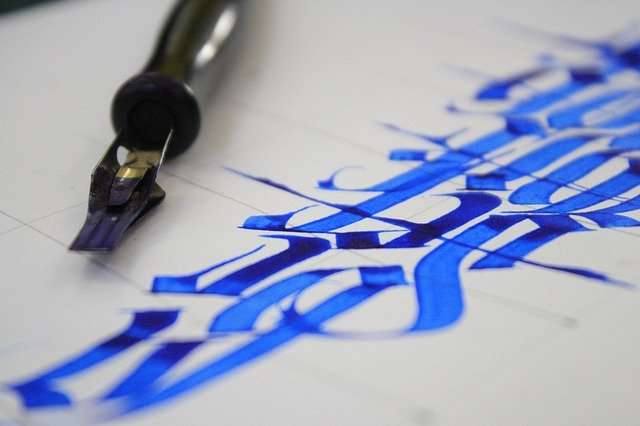Aztec Art, a Blog about Aztec Culture, History and its Arts: a blog about aztec culture, history and its arts.
Table of Contents
Introduction:
The Aztec civilization is one of the most fascinating and important cultures of pre-Columbian America. The Aztecs, also known as the Mexica, were a Mesoamerican people who dominated a large part of central Mexico from the 14th to the 16th century. They were known for their rich and diverse culture, which included religion, language, social structure, and art.
Aztec art is a crucial aspect of this cultural legacy and provides a unique window into the Aztec way of life. The art of the Aztecs is renowned for its vibrant colors, intricate patterns, and powerful symbolism. Aztec art was created for a variety of purposes, including religious ceremonies, adornment, and as a form of communication with the gods.
In this blog post, we will explore the origins of Aztec art and how it evolved over time. We will examine the influence of other Mesoamerican cultures on Aztec art, the various art forms that the Aztecs produced, the role of religion in Aztec art, and the evolution of Aztec art in response to historical and cultural influences.
By delving into the rich history of Aztec art, we can gain a deeper understanding and appreciation of this fascinating civilization. The legacy of the Aztecs lives on today through their art, inspiring and influencing artists and designers around the world. Join us on this journey as we explore the world of Aztec art and discover the fascinating stories behind these beautiful works of art.
The Origins of Aztec Art
The art of the Aztecs was heavily influenced by the art of other Mesoamerican cultures that preceded them. The Olmec civilization, which was one of the first Mesoamerican cultures, had a profound impact on Aztec art. The Olmec art style included stone carvings, sculptures, and pottery, which were highly detailed and included intricate designs and patterns. Many of these elements were incorporated into the Aztec art style, particularly in the areas of sculpture and pottery.
The Teotihuacan city-state, which dominated central Mexico from the 1st to the 7th century, also had a significant influence on Aztec art. Teotihuacan art was characterized by large-scale architecture, intricate stone carvings, and murals. The Aztecs borrowed many of these elements and incorporated them into their own art, particularly in the area of architecture.
The Maya civilization, which flourished in southern Mexico and Central America from the 3rd to the 10th century, was another important influence on Aztec art. The Maya were known for their advanced writing system, intricate calendrical system, and stunning architecture, all of which had a great impact on Aztec art. The Aztecs borrowed many elements of Maya art, particularly in the areas of sculpture and pottery.
Despite these influences, the Aztecs developed a unique and distinctive art style that reflected their own cultural identity. Aztec art was characterized by vibrant colors, intricate patterns, and powerful symbolism. The Aztecs used art for a variety of purposes, including religious ceremonies, adornment, and communication with the gods.
In summary, the origins of Aztec art can be traced back to the pre-Columbian era and were heavily influenced by the art of other Mesoamerican cultures such as the Olmec, Teotihuacan, and Maya. The Aztecs borrowed many elements of these art styles but developed a unique and distinctive art style that reflected their own cultural identity.
Aztec Art Forms
The Aztecs were highly skilled artisans who produced a wide range of art forms, including sculpture, pottery, jewelry, textiles, and architectural decorations. Each of these art forms served a unique purpose and provided insight into the Aztec way of life.
Sculpture:
Aztec sculpture was predominantly made from stone, although they also worked with other materials such as wood and clay. The Aztecs created large stone sculptures of deities, rulers, and other important figures. These sculptures were often highly detailed, with intricate designs and patterns.
One of the most famous Aztec sculptures is the colossal stone statue of the sun god Huitzilopochtli, which was located in the Great Temple in the capital city of Tenochtitlan. This statue was carved from a single piece of basalt and measured over 5 meters (16 feet) in height. It depicts Huitzilopochtli in his warrior guise, complete with a shield, spear, and serpent.
Pottery:
Aztec pottery was characterized by its intricate designs and vibrant colors. The Aztecs used pottery for a variety of purposes, including cooking, storage, and religious ceremonies. Many Aztec pottery items were decorated with scenes from mythology, such as the story of the sun god Huitzilopochtli and his siblings.
One of the most famous Aztec pottery items is the Aztec Calendar Stone, which is also known as the Sun Stone. This massive stone disc, which measures over 3 meters (10 feet) in diameter, is carved with intricate designs and symbols representing Aztec mythology and cosmology.
Jewelry:
Aztec jewelry was made from a variety of materials, including gold, silver, and precious stones. The Aztecs used jewelry to adorn themselves for religious ceremonies and special occasions. They also used jewelry as a form of currency and as offerings to the gods.
Many Aztec jewelry items featured intricate designs and symbols representing Aztec mythology and cosmology. One of the most famous examples of Aztec jewelry is the pectoral of the Aztec ruler Moctezuma II, which was made from gold and turquoise.
Textiles:
Aztec textiles were highly prized for their intricate designs and vibrant colors. The Aztecs produced textiles from a variety of materials, including cotton, agave fibers, and feathers. Many Aztec textiles were decorated with scenes from mythology, such as the story of the feathered serpent Quetzalcoatl.
One of the most famous Aztec textiles is the featherwork shield of Moctezuma II, which was made from thousands of brightly colored feathers. This shield, which measures over 1 meter (3 feet) in diameter, is decorated with intricate designs and symbols representing Aztec mythology and cosmology.
Architecture:
Aztec architecture was characterized by its massive scale and intricate carvings. The Aztecs built large pyramids, temples, and palaces, many of which were decorated with detailed stone carvings and murals. These structures were intended to serve as a connection between the earthly and divine realms.
One of the most famous examples of Aztec architecture is the Great Temple in the capital city of Tenochtitlan. This massive temple complex was dedicated to the gods Huitzilopochtli and Tlaloc and was decorated with intricate stone carvings and murals depicting scenes from Aztec mythology.
In summary, the Aztecs produced a wide range of art forms, including sculpture, pottery, jewelry, textiles, and architectural decorations. Each of these art forms provided insight into the Aztec way of life and was used for a variety of purposes, including religious ceremonies, adornment, and communication with the gods.
Aztec Art and Religion
Religion played a significant role in Aztec art, which was used to honor and communicate with the gods. The Aztecs had a complex polytheistic religion that included numerous deities, each with their own unique attributes and domains. Many of these deities were represented in Aztec art, often in highly detailed and elaborate forms.
Role of Religion in Aztec Art:
Religion was central to Aztec art, and many works of art were created specifically for religious ceremonies and offerings. The Aztecs believed that art was a way to connect with the gods and to communicate with them. As such, Aztec art often had a ritualistic function and was used in various ceremonies, such as the dedication of new buildings or the coronation of rulers.
Important Deities and Their Representations in Art:
Many Aztec deities were represented in art, often with highly specific attributes and symbols. For example, Huitzilopochtli, the god of the sun and war, was often depicted in his warrior guise with a shield, spear, and serpent. Quetzalcoatl, the feathered serpent, was often shown with his feathered serpent body and a human face. Many other deities, such as Tlaloc (god of rain), Xipe Totec (god of spring), and Tonatiuh (sun god) were also represented in Aztec art.
Codices and Their Illustrations:
The Aztecs also created codices, or books, which were used to record their history, mythology, and religious practices. Many of these codices were richly illustrated with detailed drawings and paintings, providing a unique glimpse into Aztec art and culture. These illustrations often depicted scenes from Aztec mythology, such as the creation story or the battles between the gods.
In summary, religion played a significant role in Aztec art, which was used to honor and communicate with the gods. Many deities were represented in Aztec art, often with highly specific attributes and symbols. The Aztecs also created codices, which were richly illustrated with detailed drawings and paintings depicting scenes from Aztec mythology and religious practices.
Conclusion
The art of the Aztecs is a testament to the richness and diversity of Mesoamerican culture. Aztec art drew inspiration from the art of their predecessors, incorporating elements of Olmec, Teotihuacan, and Maya art into their own unique style. Aztec art was heavily influenced by religion, with many works of art created to honor and communicate with the gods.
Over time, Aztec art evolved and changed in response to various cultural and historical influences. The arrival of the Spanish marked a turning point in Aztec art, with the destruction of many traditional works of art. However, the Aztec Renaissance movement sought to revive and preserve traditional Aztec art and culture, inspiring a new generation of artists and artisans.
Today, Aztec art remains as relevant and powerful as ever, inspiring and influencing artists and designers around the world. The legacy of the Aztecs lives on through their art, providing a window into a fascinating and complex culture that continues to captivate and inspire.
In conclusion, the art of the Aztecs is a unique and important part of Mesoamerican culture, showcasing the creativity, skill, and spirituality of this remarkable civilization. Through their art, we can gain a deeper understanding and appreciation of the Aztec way of life and the rich cultural legacy they left behind.


